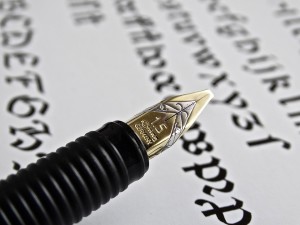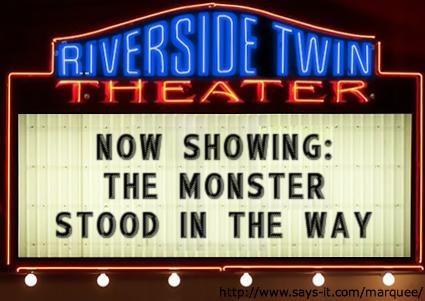 When teachers break down the elements in a story, the list often looks something like this: Setting, Character, Action (plot), Dialogue, Description, Conflict, and Theme. For literary analysis this is an adequate list, I suppose. Not particularly useful for a writer, though. Which one is the most important? For me, the element that matters most when I’m trying to write–when I’m deciding what to do next–is conflict, and I had no clue what I was doing until I figured that out.
When teachers break down the elements in a story, the list often looks something like this: Setting, Character, Action (plot), Dialogue, Description, Conflict, and Theme. For literary analysis this is an adequate list, I suppose. Not particularly useful for a writer, though. Which one is the most important? For me, the element that matters most when I’m trying to write–when I’m deciding what to do next–is conflict, and I had no clue what I was doing until I figured that out.
Whether I think of plot as a war, a birth, a Freytag pyramid, or a daisy, conflict makes it all go. Conflict may not be what I start with when I write a story, but you can be sure that it is what makes everything possible once I get going.
It wasn’t until I really got a handle on conflict that I started to write real stories, I think.
Here’s why I was messed up originally. When I took English classes in school, the teachers told us all about conflict, and then had us identify it in the story. The choices were “Man vs. Man,” “Man vs. Society,” “Man vs. Nature,” and/or “Man vs. Himself.” There were probably a few other “Man vs. . . .” constructions out there, but you get the gist of it. Here’s a fairly standard example of conflict the way I learned it. So, when I started trying to understand stories, and other authors suggested that every story had to have a conflict, I thought I knew what one was.
Silly me.
Here’s the definition of conflict that I eventually arrived at that helped me to write stories. It has three parts:
- Somebody wants something
- Something stands in the way
- Something of value is to be lost or gained
A lot of my prewriting or early drafting when I working on a story is about my search for the specifics to those three statements.
What does my character really want? To answer that question is to establish the borders of the story. When I know what the character wants, then I can have the character act. Sometimes I’ll be explicit with this desire in the text itself. It could be the very first sentence in the story, an announcement of the desire. But sometimes I write stories where the character doesn’t know what she/he wants. The desire could be subconscious, and that desire may not be revealed until the very end, when the reader and the character see it fulfilled or unfulfilled. Either way, it doesn’t matter to me as the writer. I have to know what the character wants or needs, eventually, to write it. Oh, and it’s entirely possible that the desire can evolve through the course of the story. Think of the Meg Ryan film, French Kiss, where what she wants in the beginning is to get her fiancee back, but very near the end of the story she realizes she doesn’t want him anymore.
What stands in the way. This is really just about plotting on one level. I can’t make it easy on my character to get what he wants. If I do, the story is uninteresting. I mean, I’d like to have a day where everything in my life works, but it wouldn’t make an interesting story for anyone else. Whatever gene it is within us that likes stories, seems to like them to be about people who are miserable and unhappy for the longest time before they get relief (or lose). It’s in the “what stands in the way” element that my English teachers come into play. The opposition can be man, or society, or nature, or himself, (or machine, or alien, or whatever) or some combination.
The something of value is to be lost or gained is often a question of character for me. What is particular about this character that the goal is so important to her? I can’t answer that until I know more about the character. Even stories where what of value is to be gained or lost is as obvious as life or death, I still want to know what in particular that this character has to lose if she dies.
I have to admit that I do not feel like a very subtle writer. Certainly not one who has a zillion narrative tricks up his sleeve. Between defining conflict the way I have here, and thinking about how plots are a daisy, is about 90% of what I think about when I’m writing.
There, I’ve done it. I have no secrets left.
Here are three examples of beginnings that establish conflict early. I could have picked randomly from my bookshelf and come up with a hundred others. It’s remarkable how early conflict shows up in many stories.
From “Her First Ball,” by Katherine Mansfield
Exactly when the ball began Leila would have found it hard to say. Perhaps her first real partner was the cab. It did not matter that she shared the cab with the Sheridan girls and their brother. She sat back in her own little corner of it, and the bolster on which her hand rested felt like the sleeve of an unknown young man’s dress suit; and away they bowled, past waltzing lamp-posts and houses and fences and trees.
“Have you really never been to a ball before, Leila? But, my child, how too weird–” cried the Sheridan girls.
“Our nearest neighbor was fifteen miles, “said Leila softly, gently opening and shutting her fan.
Oh, dear, how hard it was to be indifferent like the others!
From “A Poetics for Bullies,” by Stanley Elkin
I’m Push, the bully, and what I hate are new kids and sissies, dumb kids and smart, rich kids, poor kids, kids who wear glasses, talk funny, show off, patrol boys and wise guys and kids who pass pencils and water the plants–and cripples, especially cripples. Nobody loved I love.
From “Shark Attack: A Love Story,” by James Van Pelt
Willard was day dreaming about Elsa when the shark caught Benford, the new mail boy, directly in front of Willard’s desk. Lost in his dream, Willard didn’t look up from the stack of forms he was filling out mechanically. Bustle and commotion were standard fare at The First North American Trust Title Company, and the boy’s silent waving of arms wasn’t enough to distract Willard. Then the boy screeched.

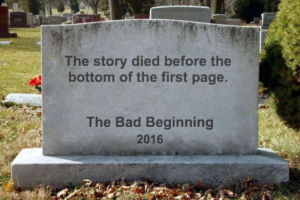 Last week I talked about writing conclusions (that don’t suck), so it only makes sense to tackle writing beginnings (that also don’t suck).
Last week I talked about writing conclusions (that don’t suck), so it only makes sense to tackle writing beginnings (that also don’t suck).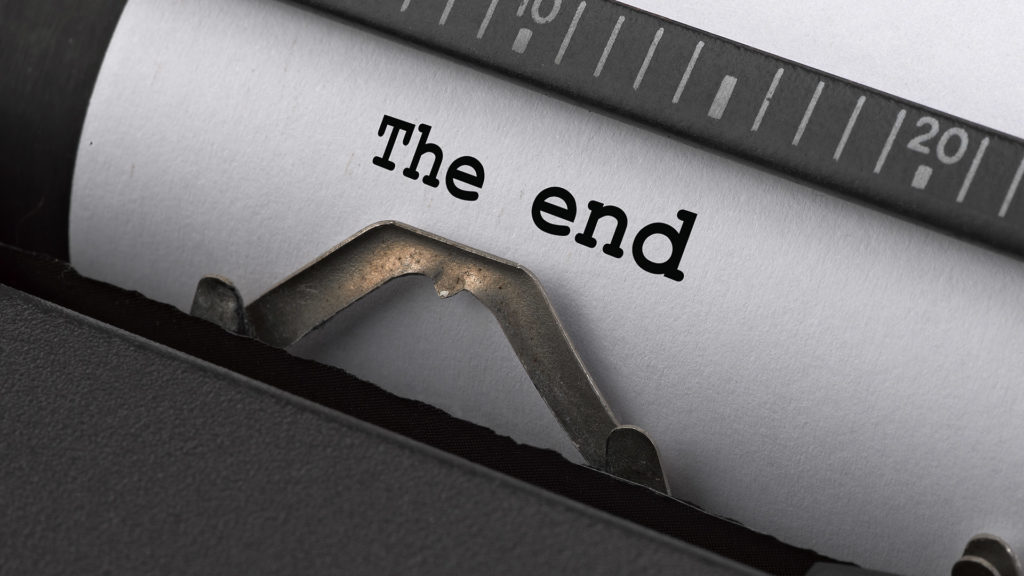 Writing the conclusion to a story can be hard! First off, the whole story has been leading to this last page, so the sense of responsibility to the story and to the reader is huge. I don’t want to end the story on a lame note, and I don’t want the readers to feel cheated, as if my story was a shaggy dog joke whose only point was in seeing how long I could keep them paying attention with the promise of a punch line that would never come.
Writing the conclusion to a story can be hard! First off, the whole story has been leading to this last page, so the sense of responsibility to the story and to the reader is huge. I don’t want to end the story on a lame note, and I don’t want the readers to feel cheated, as if my story was a shaggy dog joke whose only point was in seeing how long I could keep them paying attention with the promise of a punch line that would never come.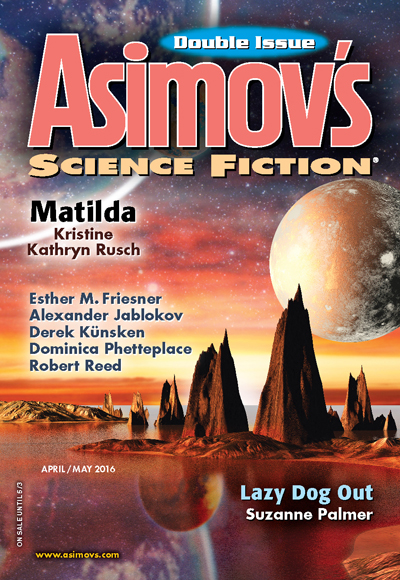 The latest Asimov’s is out with my short story, “Three Paintings.” The main character is an artist who has come up with an unusual experiment in creativity.
The latest Asimov’s is out with my short story, “Three Paintings.” The main character is an artist who has come up with an unusual experiment in creativity.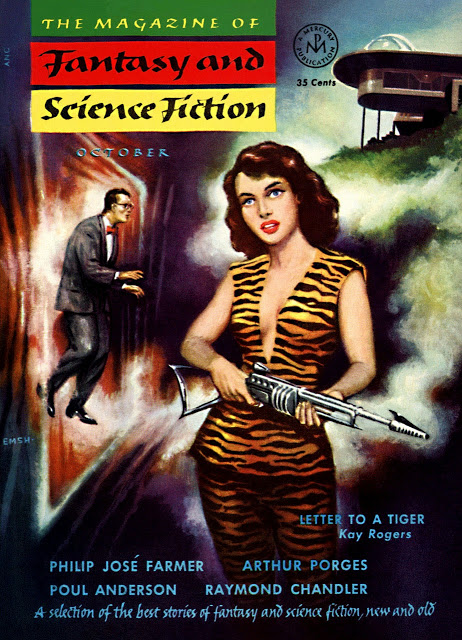 You know how sports fans will sit around the table and argue about today’s teams vs. the teams of the past? How would the 1985 Chicago Bears who went 15-1 do against the Superbowl champion 2015 New England Patriots, for example? This is an evergreen topic, and I think it’s an interesting one for the modern science fiction/fantasy writer.
You know how sports fans will sit around the table and argue about today’s teams vs. the teams of the past? How would the 1985 Chicago Bears who went 15-1 do against the Superbowl champion 2015 New England Patriots, for example? This is an evergreen topic, and I think it’s an interesting one for the modern science fiction/fantasy writer.